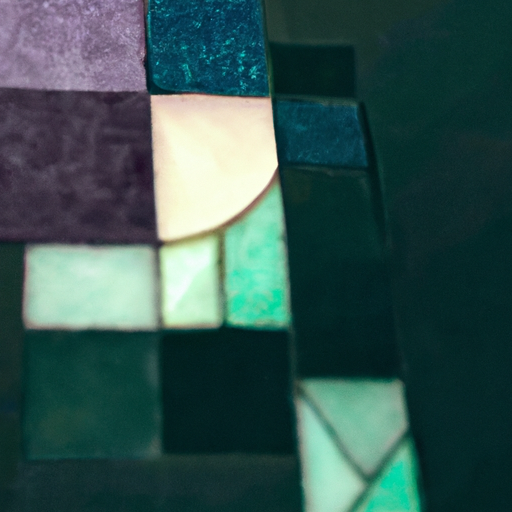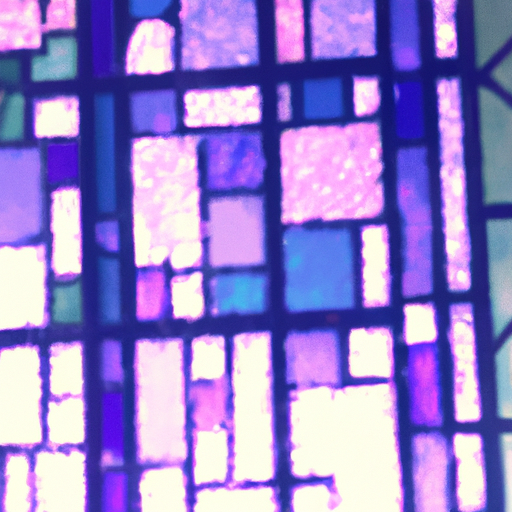
-
Table of Contents
Stained Glass Inspiration: Illuminating Design

Stained glass has been captivating people for centuries with its vibrant colors and intricate designs. From the grand cathedrals of Europe to modern art installations, stained glass continues to inspire and captivate audiences around the world. In this article, we will explore the history of stained glass, its significance in various cultures, and how it continues to inspire contemporary design.
The History of Stained Glass
Stained glass has a rich history that dates back to ancient times. The earliest known examples of stained glass can be traced back to ancient Egypt, where small pieces of colored glass were used to create decorative objects. However, it was during the medieval period that stained glass truly flourished.
During the Middle Ages, stained glass became an integral part of church architecture. The use of stained glass windows allowed churches to tell stories from the Bible in a visually stunning way. These windows were often large and featured intricate designs that were painstakingly crafted by skilled artisans.
One of the most famous examples of medieval stained glass is the Rose Window at Notre-Dame Cathedral in Paris. This stunning window, dating back to the 13th century, features a complex design of interlocking circles and vibrant colors. It serves as a testament to the skill and artistry of the craftsmen who created it.
The Significance of Stained Glass in Different Cultures
Stained glass is not limited to the Christian tradition. It has played a significant role in various cultures around the world, each with its own unique style and symbolism.
Islamic Stained Glass
In Islamic culture, stained glass is often used to decorate mosques and other religious buildings. Islamic stained glass typically features intricate geometric patterns and calligraphy. These designs are not only visually stunning but also hold deep symbolic meaning. The use of geometric patterns represents the infinite nature of God, while calligraphy is used to convey verses from the Quran.
Tiffany Stained Glass
In the late 19th and early 20th centuries, American artist Louis Comfort Tiffany revolutionized the art of stained glass with his innovative techniques and designs. Tiffany’s stained glass windows featured vibrant colors and intricate patterns, often inspired by nature. His work had a significant impact on the Art Nouveau movement and continues to be highly sought after by collectors today.
Stained Glass in Contemporary Design
While stained glass has a long history, its influence can still be seen in contemporary design. Architects and designers continue to draw inspiration from stained glass, incorporating its vibrant colors and intricate patterns into their work.
One example of stained glass-inspired design is the Sagrada Familia in Barcelona, Spain. Designed by architect Antoni Gaudí, this iconic church features stunning stained glass windows that flood the interior with colorful light. Gaudí’s use of stained glass not only adds beauty to the building but also creates a unique and immersive experience for visitors.
Another example is the work of contemporary artist Kehinde Wiley. Known for his vibrant portraits, Wiley often incorporates stained glass elements into his paintings. By combining traditional stained glass techniques with contemporary art, Wiley creates visually striking pieces that challenge traditional notions of portraiture.
The Benefits of Stained Glass in Design
Stained glass offers several benefits in design beyond its aesthetic appeal. Here are some of the key advantages:
- Natural Light: Stained glass windows allow natural light to filter through, creating a warm and inviting atmosphere.
- Privacy: Stained glass can be used to create privacy without sacrificing natural light. By incorporating stained glass panels into windows or doors, designers can create a sense of privacy while still allowing light to enter a space.
- Artistic Expression: Stained glass provides a unique opportunity for artistic expression. Designers can create custom designs that reflect the client’s personality or tell a specific story.
- Energy Efficiency: Stained glass windows can also offer energy-saving benefits. By using stained glass with low-emissivity coatings, designers can reduce heat transfer and improve insulation.
Conclusion
Stained glass has a long and storied history that continues to inspire and captivate audiences today. From its origins in ancient Egypt to its use in contemporary design, stained glass has proven to be a versatile and timeless art form. Whether it’s the intricate designs of medieval cathedrals or the vibrant colors of modern art installations, stained glass continues to illuminate and inspire.
As designers and architects continue to push the boundaries of creativity, it is clear that stained glass will remain a source of inspiration for years to come. Its ability to transform light, create unique atmospheres, and tell stories through art make stained glass a truly remarkable medium.
